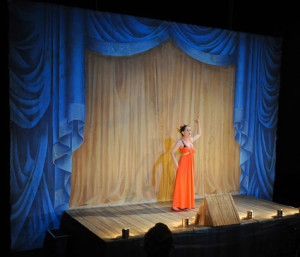Public Speaking: It’s An Artful Approach To Communicating Better
 Over the last few years many executive coaches have been urging leaders to learn to communicate more powerfully through examples from the acting profession. But they may have it wrong — or at least, only half right.
Over the last few years many executive coaches have been urging leaders to learn to communicate more powerfully through examples from the acting profession. But they may have it wrong — or at least, only half right.
With inspiring and often very talented actors leading workshops in the corporate workplace, the sights and sounds of group improvisation, storytelling and even Shakespearean verse abound. And the energy and creativity this can unleash is a good thing when it leads to well-told stories that inspire colleagues, customers and stakeholders to take action. But it doesn’t work for everyone.
Too often the acting angle elicits rolling eyes, tightly folded arms and comments like “Maurice over there might enjoy this — he’s a bit dramatic anyways — but this isn’t for me.”
I know from long experience; I’ve had those eyes rolled at me.
I graduated with a political degree from Harvard University John F. Kennedy School of Government and acted professionally for years while also teaching executives communication skills. With investment bankers, civil engineers or internet software CEOs, the acting angle doesn’t often get them doing really effective work.
If you’re in that category, try this instead: think of practicing speaking skills as practicing a sport.
With a sport, you’re not pretending to be someone else. You are training your body and your mind to achieve feats of skill — building your muscle memory with drills and repetition.
Even leaders who prefer a couch to a tennis court tend to rise to the challenge of approaching things like Venus Williams or Roger Federer — step by step, practiced move by practiced move. So get it out of your head that you have to “perform,” to be someone else, be fascinating, to hold their attention like a Johnny Depp or a Natalie Portman. To be a better public speaker, you just need to get out of your own way, so we can see you for who you really are. Glimpsing that authentic core can be riveting, and that’s where the sport comes in.
To approach speaking as a sport, leaders need to be aware of their own potent skills. They need to know their bodies: their instruments, and how versatile, flexible and capable they are. They need to know how things work. Where does your voice come from? What can you accomplish with gesture and movement? And how do you organize the flow of information through your body so that it has maximum impact? What’s the game plan of a particular meeting or presentation, and what tools can you use to make sure it plays out the way you want it to?
We speak of some athletes as artists in their field because they exercise their skills with a mastery that appears effortless. That is where the art and sport of great communication skills come together. As either an athlete or an artist, you have to practice over and over and over again so that you’re not thinking about the people in the stands watching your brilliant shot, not thinking about the people in the audience hearing your brilliant words, but just thinking: here’s how I always use my instrument when the “ball” comes my way.
I worked with a CEO (“Bill”) who had a great series of stories to tell. His company was poised for huge wins. The numbers had been disappointing for several quarters, but now things were turning around and there were successes to share from divisions around the globe that could inspire — if only the rank and file could just hear them. But his stories fell flat; they were disorganized and didn’t have a clear point. And, worse still, he told the stories badly: low affect, shuffling, mumbling, and speaking while facing the screen or the same few faces.
It turned out “Bill” had run track in college and was a golfer, so the idea of practicing  public speaking like a sport came naturally to him. We set up and practiced a regimen of physical exercises to strengthen, stretch and support his physical presence — voice, gesture, movement. And we put together outlines and organizational frameworks that he could use as a basis for giving powerful and memorable structure to his talks — a game-plan. Now he knew how to practice, and he wasn’t encumbered by the fear that he was “acting,” pretending to be someone else, or performing a “schtick.” He could think of it as a sport — something he was already comfortable doing.
public speaking like a sport came naturally to him. We set up and practiced a regimen of physical exercises to strengthen, stretch and support his physical presence — voice, gesture, movement. And we put together outlines and organizational frameworks that he could use as a basis for giving powerful and memorable structure to his talks — a game-plan. Now he knew how to practice, and he wasn’t encumbered by the fear that he was “acting,” pretending to be someone else, or performing a “schtick.” He could think of it as a sport — something he was already comfortable doing.
Here’s the funny thing. Much of the preparation and practice we were employing was exactly the kind that actors use. That’s the half that those acting coaches I mentioned earlier get right. But I wasn’t going to bother “Bill” with that.
[custom_author=maurice]